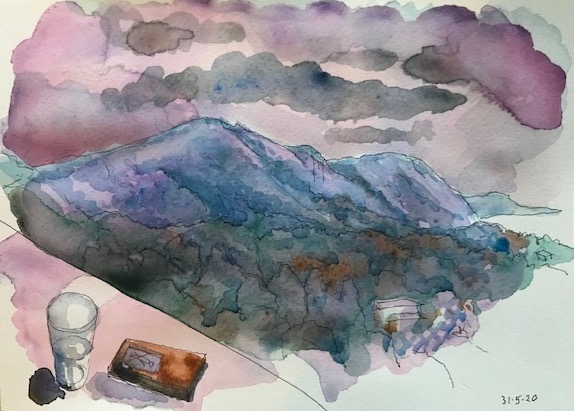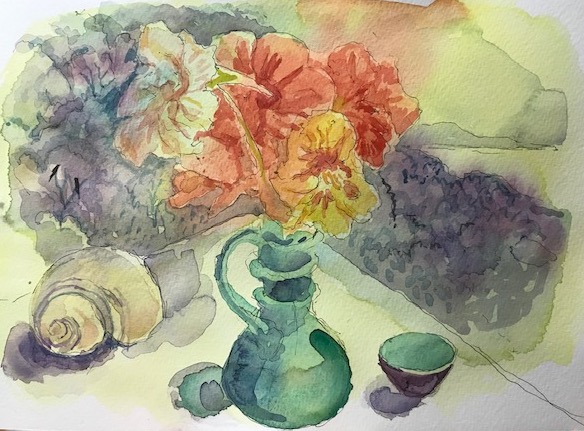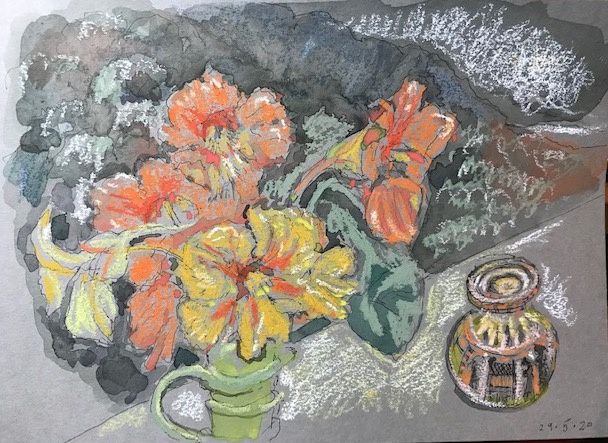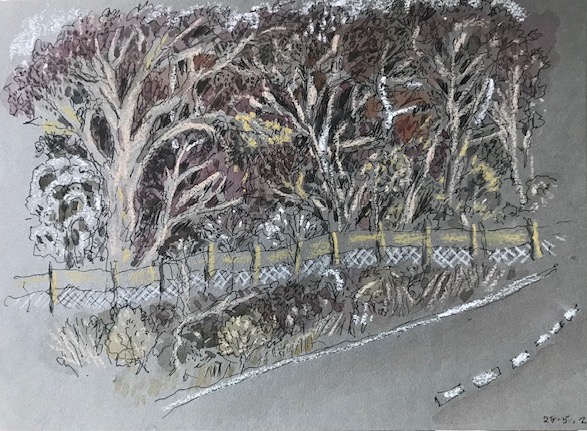The 70 Days of Covid 19 from Day 70 1June backwards to Day 1, March 24 2020. Sponge from the beach, Day 70, 1 June 2020
 Monday, June 1, 2020 at 7:27AM
Monday, June 1, 2020 at 7:27AM Everything is opening up, with a semblance of normality. A walk on the radiant beach was sprinkled with families. A tiny boy toddled along, his feet in the crinkly waves, laughing and laughing in pure happiness at being there. The interlaced branches of the sponge found on the sand had been thrown up by rough seas. I think Covid 19 has been a rough sea, and will change everyone in all kinds of ways, such as the unthinking ease of travel and being in crowded places. The universities will change irreversibly.
I have kept this daily Covid 19 journal for 70 days, since March 24th and will stop now as restrictions lift. I've become aware, as Julia Baird has said, that in difficult times you draw on what you have learnt and felt, all the gifts of family, education, friendship and love. The 'nous' in Greek means the heartfelt mind, or a thinking heart and this can be a bulwark, a fortress against attacks from anxious uncertainty. Keeping the seventy day rhythm of posting the daily watercolour has allowed me to view the underlying necessity of what I have done over fifty years of being an artist. The subterranean drive to make art over decades has become visible in weeks of unstructured time. The next thing is to document the archive of my tapestries and other works, in ardent thanks to all the institutions and people who have supported me since my first Australia Council grant in 1975.
It was wonderful that people have read this journal and I was vastly encouraged by warm appreciation.
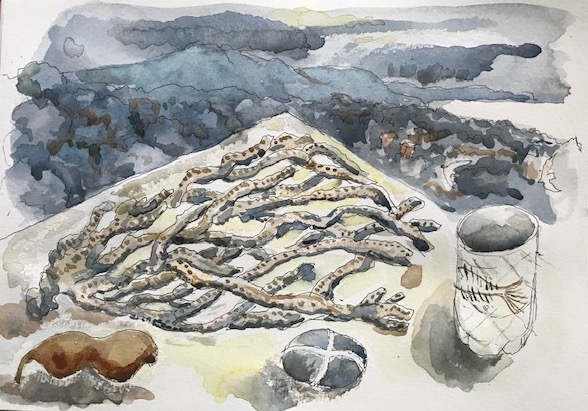
Diana Wood Conroy ,'Sponge from the beach', watercolour on Arches paper, 15 x 21 cm, 1 June 2020
